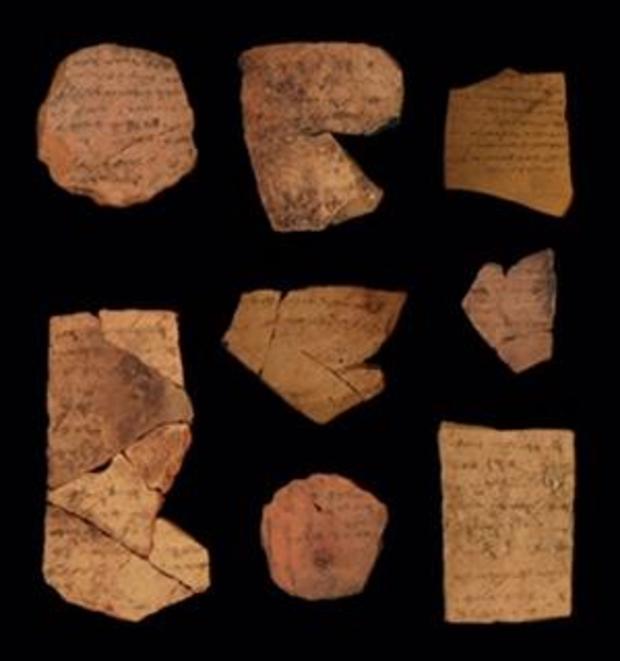Modern forensics offers clues in a 2,600-year-old Biblical mystery
Jerusalem — Researchers using modern techniques to scrutinize ancient texts have concluded that literacy may have been far more common in biblical times in the Holy Land than previously suspected.
A study carried out by Tel Aviv University in conjunction with a retired forensic handwriting specialist from the Israeli Police suggests reading and writing may not have been skills possessed exclusively by the royal elite, and there may even have been a functioning education system in the ancient kingdom of Judah more than 2,600 years ago.
The researchers studied 18 individual pieces of text inscribed on 12 pottery shards that were found decades ago in Israel's Negev desert. The shards, or ostraca, found in the ruins of the Tel-Arad fortress date back to about 600 BC.
The university researchers, along with the Israeli Police's former senior expert in handwriting forensics, used state-of-the art image processing and artificial intelligence to scrutinize the text on the pottery fragments.
"It was a big challenge to adopt modern technologies to 2,600-year-old ostraca," said Shira Faigenbaum-Golvin, one of the researchers on the project from the applied mathematics department at Tel Aviv University. But the team was able to produce two computer algorithms "that could compare letters and answer the question of whether two given ostraca were written by two different people."
The texts were discovered in the 1960s at the Tel-Arad site, which, two millennia ago was a small military outpost on the southern border of the kingdom of Judah. The fortress was situated high on a hill overlooking a main road in and out of Jerusalem.
Given that it was just one of a series of small outposts along that road and not a seat of power or nobility, the researchers believe the varied handwriting found there indicate a higher level of literacy in the ancient kingdom than currently thought to have existed.
"Since we could identify 12 different handwritings, out of 18 (texts), we could conclude that there was a high level of literacy throughout the entire kingdom," said Dr. Barak Sober, a biblical archaeologist who was involved in the research.
That conclusion could have implications for an ongoing debate among biblical scholars over exactly when the various books of Hebrew Bible and the Old Testament of the Christian bible were penned, and by whom.
"There is a lively debate among experts as to whether the books of Deuteronomy, Joshua, Judges, Samuel and Kings were compiled in the last days of the kingdom of Judah, or after the destruction of the First Temple by the Babylonians," said Dr. Arie Shaus, one of the lead researchers. "One way to try to get to the bottom of this question is to ask when there was the potential for the writing of such complex historical works."
Sober noted that while there is "very scant archaeological evidence of Hebrew writing in Jerusalem and its surroundings" for the period after 586 BC, when the First Temple was destroyed, plenty of Hebrew writing samples have been found predating that time, so "the question arises – who wrote these documents? Was this a society with widespread literacy, or was there just a handful of literate people?"
"Some scholars suggest that many of the historical texts in the Bible – from Joshua to II Kings – were written at the end of the 7th century BC, that is, very close to the period of the Arad ostraca," said archaeologist Israel Finkelstein, who also worked on the project. "According to one view, there were events in which the few people who could read and write stood before the illiterate public and read texts out to them. A high literacy rate in Judah puts things into a different light."
Dr. Sober said also that if many of the small contingent (only a couple dozen troops) stationed at the Tel-Arad site were literate, "someone had to teach them how to read and write, so we must assume the existence of an appropriate educational system in Judah at the end of the First Temple period."





